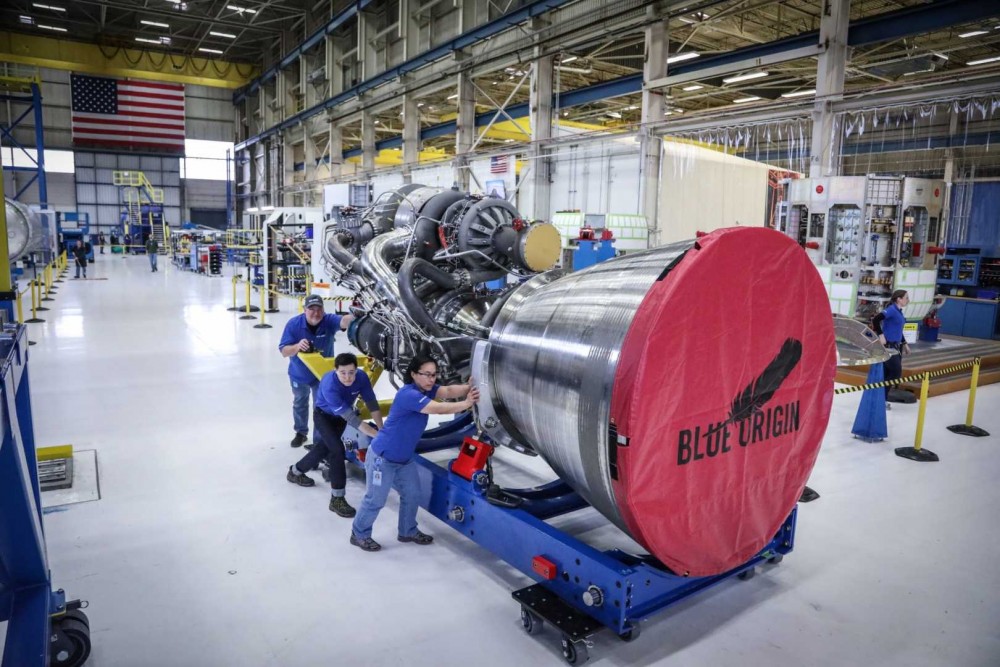Blue Origin Hot-Tests New BE-4 Engine
When I was a kid, the portrayal of space ships showed them landing on their tails. Up until recently, every launch just threw away the engines and boosters. This made the cost of launching a package into orbit very expense. Recently SpaceX has developed the capability to land the launch vehicle back on its tail so it can be reused. This will allow SpaceX to offer launch services that are much cheaper than competitors. One competitor is working hard on their own reuse capability. I have blogged before about Blue Origin, the company founded by Amazon’s Jeff Bezos, attempt to return the engines in the launch vehicle to Earth for reuse. There is new news on Blue Origin efforts.
Blue Origin has been developing the BE-4 liquid natural gas engine for years. This new engine will be used for the Blue Origin New Glenn orbital rocket. There has been great interest in this engine in the space industry. It features new innovations in technology and it is intended to be fully reusable.
The BE-4 has just passed an important milestone called a hot-fire test. Last Wednesday at the Blue Origin’s West Texas test facility, a BE-4 engine was fired at fifty percent power for three seconds. The testing of the BE-4 engine sends a signal to the space industry that Blue Origin intends to compete for major launch contracts against other companies such as SpaceX.
The new Blue Origin BE-4 engine develops five hundred fifty pounds of thrust at sea level. This is the most powerful U.S. rocket engine developed since Rocketdyne created the RS-68 engine over twenty years ago. The RS-38 engine was a workhorse for the U.S. space program but it is too expensive for today’s space missions. The U.S. military has also been using the Atlas V powered by Russian engines to launch some missions which is also too expensive.
The United Launch Alliance which has been flying the Delta IV fleet of launch vehicles powered by RS-38 engines has decided to outsource the construction of mew rocket engines. The ULA is working on a new rocket dubbed the Vulcan to replace both the Delta IV and the Atlas V rockets. The ULA prefers the BE-4 engine but is also considering the AR1 engine being developed by Aerojet Rocketdyne as a backup choice.
Aerojet Rocketdyne has a long history of engine development. Lobbyists for Aerojet Rocketdyne are busy on Capitol Hill trying to get Congress to force the ULA to use their AR1 engine instead of the BE-4 based on the argument that Blue Origin is a new company that does not have the experience and expertise to build such a complex new rocket engine. The successful hot-test just conducted by Blue Origin is evidence that Aerojet Rocketdyne may be wrong about the ability of Blue Origin to perfect the BE-4 engine. In addition, this test shows that Blue Origin is ahead of Aerojet in the development of a powerful new rocket engine.
The BE-4 engine is being developed for the New Glenn rocket. This big orbital rocket may be tested as early as 2020. The design of the New Glenn calls for seven rocket engines to power the two hundred and seventy foot tall vehicle. This rocket will have the ability to send forty five tons of payload into lower Earth orbit. It will also be able to launch thirteen tons to geosynchronous orbit. Each BE-4 engine will be able to be recovered and reused up to one hundred times.
BE-4 engine:
